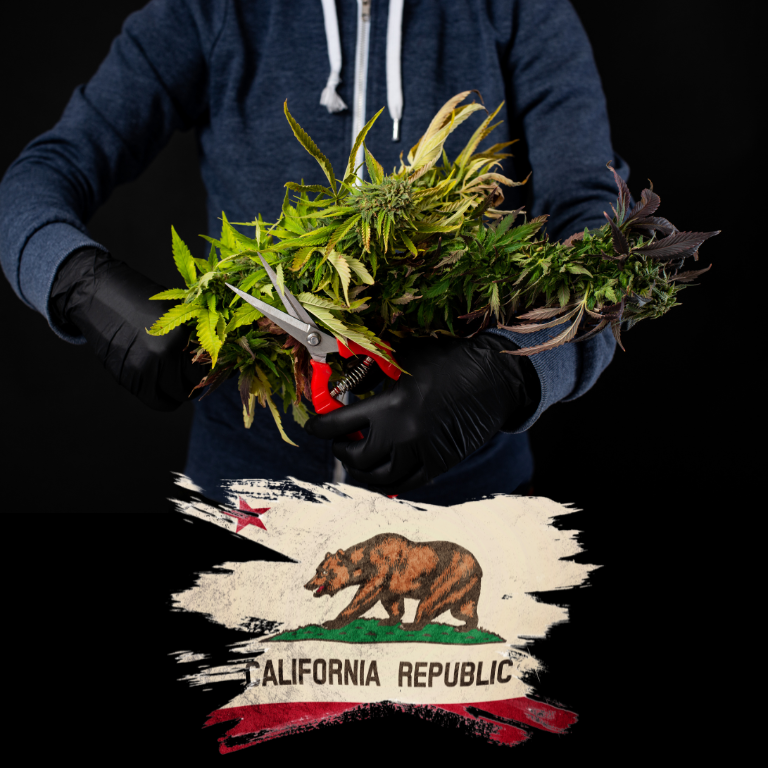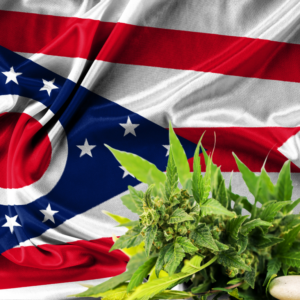California Cannabis Farmers Predict ‘Best Harvest’ for 2024

California Cannabis Farmers Reap Success with Favorable 2024 Growing Season
California’s sun-grown cannabis industry, long celebrated for its distinct quality and natural terpene profiles, saw a highly successful 2024 growing season. Benefiting from an ideal combination of a cool, wet spring and a hot, dry summer, cannabis farmers across the state were able to improve yields while facing fewer threats from wildfires. This promising season is anticipated to bring both high-quality harvests and potentially more stable pricing to the market, bolstering the reputation of California’s renowned Emerald Triangle and its craft cannabis farms.
Optimal Weather Conditions Boost Yields
The 2024 growing season proved beneficial for cannabis cultivators, thanks to a favorable climate cycle that brought ample rainfall in the spring, followed by a warm, dry summer. This climate helped stave off the spread of wildfires that have historically threatened California’s cannabis farms, giving cultivators a much-needed break from smoke damage and crop losses. In California’s Emerald Triangle—comprising Humboldt, Mendocino, and Trinity counties—the weather allowed farmers to achieve higher yields and richer terpene profiles, which are key to the appeal of sun-grown cannabis.
However, the late spring rains also meant that planting was delayed for some farmers, leading to a later harvest season. While this raised concerns about mold as California enters its rainy months, many cultivators noted that their crops had a resilience against mold, allowing them to bring in the remaining “Croptober” harvest with confidence.
Market Impact: Premium Cannabis with a Premium Price
California’s sun-grown cannabis, especially that from the Emerald Triangle, is prized for its complex flavors and aromas, often considered more natural and nuanced than indoor-grown strains. Many craft cannabis farms have positioned their flower as a premium product, often using eco-friendly packaging and regenerative cultivation practices to differentiate their offerings in a competitive market. With these methods, farms like Sol Spirit can command higher prices, reflecting the quality and care invested in each crop.
The high-tier cannabis produced by craft farms is expected to fetch significantly more than mass-produced cannabis flower, with some premium brands able to sell for as much as three times the price of lower-tier offerings. This price distinction helps small, craft farms remain financially viable amid a market saturated with large-scale operators.
Craft Farms Seek Stability in a Volatile Market
For small cannabis farms, establishing reliable sales channels has been crucial. While some farms rely on long-standing relationships with dispensaries to maintain market presence, others are developing licensing agreements with retailers and distributors seeking exclusive strains. For instance, select cultivars from Huckleberry Hill Farms, known for their unique genetics, have been highly sought after, allowing the farm to secure sales agreements even before harvest begins.
With the added pressure from larger operators driving down prices, some small farms have pivoted to selling cannabis in bulk to retailers, who then package it under their own brands. However, most craft farms still retain a strong connection with local dispensaries that have supported their products for years, allowing these relationships to provide a stable customer base in an uncertain market.
Rising Demand for Clean, Sun-Grown Cannabis
A recent controversy involving pesticide use in California’s cannabis sector has fueled consumer interest in sun-grown, pesticide-free cannabis from smaller, craft farms. As a result, many farms have been encouraged to transition to integrated pest management systems that rely on natural methods, such as using California-native ladybugs to control pests instead of chemical treatments. This approach is especially appealing to health-conscious consumers who are increasingly prioritizing clean, sustainable products.
At Autumn Brands, a farm in Carpinteria, a commitment to pesticide-free cultivation has become part of the company’s core identity. The farm has invested years in building a self-sustaining ecosystem that relies on natural pest control, contributing to its reputation for quality and purity. Located in an ideal climate that receives abundant sunlight while protecting plants from harsh weather, the farm has demonstrated that clean cultivation practices are viable even at a larger scale.
A Respite from Wildfires in 2024
One of the most significant challenges for California’s cannabis farmers in recent years has been the threat of wildfires. These fires not only destroy crops but also produce smoke that can affect the quality of cannabis flowers grown nearby. This year, however, brought a reprieve, with fewer fires threatening agricultural land. This has allowed farmers to focus on their crops without the fear of imminent fire damage, offering a rare opportunity for a more stable growing season.
Farms located in coastal areas like Amaranth Farms in Humboldt County have benefited from their distance from national forest land, reducing the risk of wildfire encroachment. This geographic advantage has given coastal farms a buffer, making them less susceptible to fire-related losses. The resulting stability has contributed to a sense of optimism within the craft cannabis farming community.
Market Outlook: Pricing Pressure and Optimism Among Growers
While the favorable growing season has led to an abundance of sun-grown cannabis, pricing remains a concern, particularly as large-scale operators continue to impact market dynamics. Craft growers, like those in Humboldt County, hope to maintain a price point around $500 per pound to sustain their operations. This price level is crucial for small farmers, who have already seen their numbers dwindle significantly in recent years due to market pressures and competition from larger operations.
As larger cannabis businesses have expanded, many small farmers have either left the market or reduced production. However, the craft cannabis community remains hopeful. With the recent uptick in consumer demand for clean, sun-grown cannabis, there is potential for small, sustainable farms to capture a niche market segment that values quality over quantity.
Revitalizing Legacy Cannabis Strains to Boost Demand
One strategy that California’s craft cannabis farmers are leveraging is the promotion of legacy genetics, which are strains cultivated over generations and treasured for their unique qualities. These genetics help farms create distinct, highly sought-after products that can command a premium in the market. Strains like Huckleberry Hill Farms’ Whitethorn Rose, for example, have gained a reputation among cannabis enthusiasts, and the farm plans to release this cultivar to a broader audience through licensing agreements by 2026.
Legacy strains not only offer a marketing advantage but also contribute to preserving the heritage of California’s cannabis industry. By maintaining and promoting these genetics, craft farmers can attract consumers interested in exclusive, storied strains that larger operators may not offer, further reinforcing the value of small-scale, artisanal cultivation.
Future Prospects for California’s Sun-Grown Cannabis
The successful 2024 season has rejuvenated optimism within California’s craft cannabis industry. Small farms are using this momentum to enhance their marketing efforts, promote sustainable practices, and highlight the quality and purity of their sun-grown cannabis. While larger market forces continue to challenge their business models, the recent shift toward high-quality, pesticide-free cannabis may provide a much-needed edge for small producers.
As California’s cannabis industry grows, the demand for diverse, clean, and sustainably produced products is likely to strengthen, positioning craft farms as essential players in the market. The future of California’s sun-grown cannabis may well depend on the unique value that small farms bring to an increasingly competitive and discerning marketplace.











